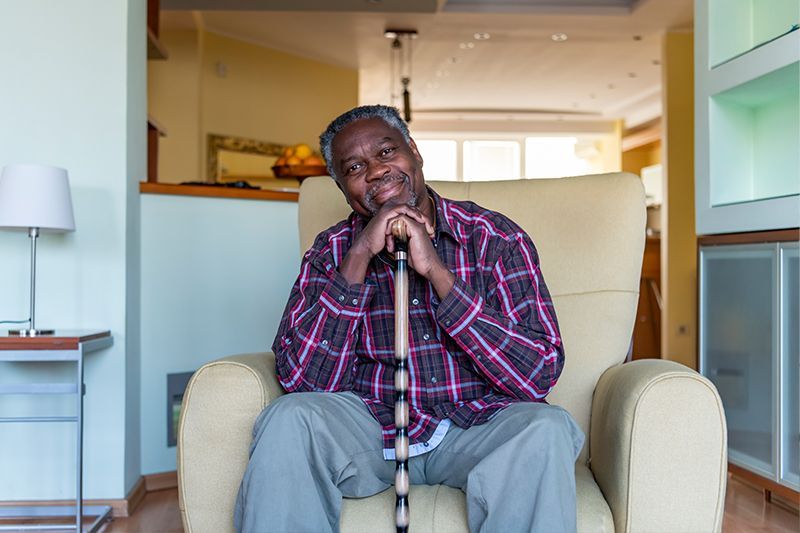The Startling Health Risks Related to Prolonged Sitting for Seniors

At first, it doesn’t look like a problem. Dad’s relaxing in his favorite chair, enjoying the TV, maybe closing his eyes for a short nap. But if this seated time stretches into most of the day, it can quietly harm his health in ways you might not expect.
Many experts call this pattern sitting disease. It’s not a formal medical diagnosis, but the term describes the risks of living with too little movement—and those risks of prolonged sitting for seniors are especially concerning.
The Real Impact of Prolonged Sitting
When the body stays inactive for long periods, several health concerns can develop:
- Blood doesn’t circulate as efficiently
- Muscles weaken and bones lose density
- The risk of heart problems, stroke, and diabetes goes up
- Balance worsens, leading to more falls
- Mental clarity and memory can decline
- Joint stiffness and aches become more common
- Overall life expectancy can shorten
A surprising fact: even if a person exercises a few times a week, long, uninterrupted sitting can cancel out some of those benefits.
Why Older Adults Are More at Risk
Aging naturally brings changes that can slow us down, but reduced activity can make those changes happen faster and more severely.
Once a person becomes less active, muscles and joints weaken, making movement harder—and the harder it is, the less they move. This cycle can be hard to break.
Watch for signs like:
- Difficulty getting out of chairs
- Unsteady walking or more stumbling
- Sleeping more during the day
- Seeming less alert or engaged
- Pulling away from social gatherings or activities
Sometimes these symptoms point to inactivity, not simply aging.
Encouraging More Daily Movement
Getting a loved one to move more doesn’t require a gym membership or a strict exercise plan. Gentle, frequent bursts of activity can make a big difference:
- Set a timer. Encourage standing, stretching, or a short walk every hour.
- Make entertainment active. Stretch during TV commercials or stand while listening to music.
- Incorporate movement into chores. Folding clothes, watering plants, or organizing a shelf keeps the body moving.
- Walk while talking. Take a short stroll during phone calls.
- Use music as inspiration. A favorite tune can spark light dancing or swaying.
Keep Efforts Safe
Always think about safety. Clear away tripping hazards, encourage good footwear, and use mobility aids when needed. Start with small changes and build gradually.
When Extra Support Helps
If sitting has become the default, our care team can help reintroduce healthy movement. Call 617-376-3711 to learn how we support seniors in Boston, Cambridge, Newton, and the surrounding areas in Eastern Massachusetts, with live-in care available throughout New Hampshire, Vermont, Maine, and Massachusetts.



